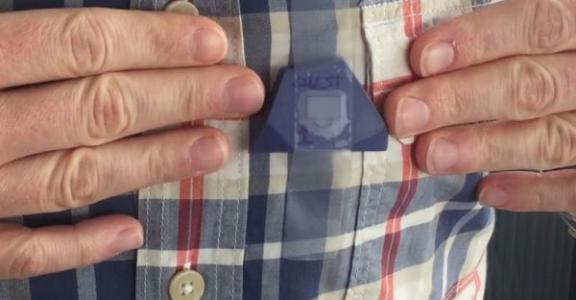Most technology branded as wearable that hits the market today is still in the form of dedicated electronic devices that users need to consciously wear. Well after the wave of enthusiasm following the launch of the first fitness trackers, smartwatches and smart glasses, new wearables are rarely unobtrusive and comfortable enough for being worn for prolonged periods of time. The CareWare project aimed at using electronic textiles to make a step towards fully unobtrusive wearable solutions suited for health and sports applications.
The EluciDATA Innovation Lab of Sirris was one of the initiators of that project and its main contribution was to design and build a proof-of-concept system to collect data from a heterogeneous set of wearable and environmental sensors, extract from this data analytics about the monitored user, and provide this user and other relevant stakeholders with actionable feedback.
CareWare was an ITEA R&D project which lay at the crossroads of the textiles, electronics and ICT domains, and which involved partners from these different areas of the value chain required to build unobtrusive wearable solutions. The project ran from January 2015 until January 2018 and the Belgian partners Alsico, Centexbel, Televic, Sony Depthsensing Solutions (formerly SoftKinetic), NXP and Sirris collaborated within a consortium composed of 9 other companies and research institutions from 2 other European countries (France and Lithuania) on the realization of proof-of-concept solutions for health and sports applications.
The Belgian partners focused on the health domain and more specifically on the realization of proof-of-concept solutions for unobtrusive, non-stigmatizing and comfortable patient monitoring. This was done within a use case with the objective to support nurses in a care institution in the follow-up of the evolution of patients towards becoming more active again after an intervention such as a knee replacement surgery.
Developments at textile and electronics level
At the textile and electronics levels, research activities led to the realization of the following prototypes:
- A patient garment incorporating stretch sensors on the elbow and knee areas to be able to derive wearer's postures such as standing up, sitting down and lying down (by Centexbel, Alsico and NXP)
- A patient garment supporting a depth-sensing camera for recognizing a wearer's hand gestures (Sony Depthsensing Solutions and Centexbel)
- A patient or nurse garment integrating a push button to be used as a nurse call button and personal hub for the sensors in a wearer's vicinity (by Televic, Centexbel and Alsico)
Development at the ICT level
At the ICT level, Sirris and Televic built a nurse dashboard and alerting system aiming at providing nurses with a dashboard indicating the current status, evolution and progress of their patients, and at alerting these nurses when the system detects a potentially dangerous situation requiring their intervention or when a patient explicitly asks for help (either by pressing the nurse call button or by realizing a specific hand gesture recognized by Sony Depthsensing Solutions's camera).
The research activities performed by Sirris and Televic led to the definition of the global architecture of that system and of a number of alerting scenarios for illustration purposes. In addition, Sirris focused on the data processing aspects and defined a suitable architecture for collecting and processing data in real-time from wearable and environmental sensors. Sirris built a data processing backend system with several components to fuse the collected data, to recognize the activities performed by the monitored patient (e.g. sleeping, being at the toilet, performing a walking exercise), to construct higher-level features providing real-time information about a patient's status and evolution (e.g. number of hours sleeping per day, duration of walking exercises, performed number of steps), to detect potentially dangerous situations and raise alerts to nurses, and to evaluate a patient's progress against assigned goals. Sirris also built a dashboard to represent the information generated by this backend and present it to nurses.
Finally, in order to simulate the technological components being built by the other project partners, Sirris used several off-the-shelf proximity beacons to detect a patient's postures and to track indoor location, and built a smartwatch app to be used as a nurse call button and personal hub, which sent the collected data to the processing backend running in the cloud. Other off-the-self sensors used were a bed presence sensor, as well as an accelerometer, a step counter and a heart rate monitor which were to be worn by a patient.
The following video illustrates the envisioned nurse dashboard and alerting system:
Would you like to know more about this project or about how to fully exploit data from wearables and other sensor sources in your specific context? Feel free to contact us!

